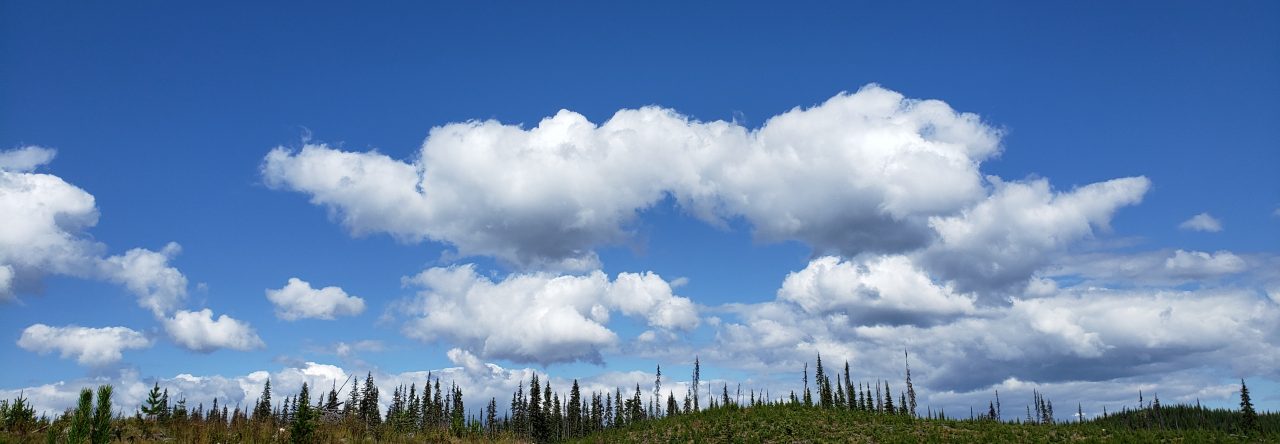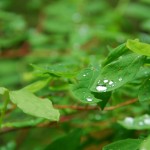 I tried to grow tomatoes in Vancouver many times. The climate did not agree with my intentions and the tomato project became a ‘perhaps one day…’
I tried to grow tomatoes in Vancouver many times. The climate did not agree with my intentions and the tomato project became a ‘perhaps one day…’
Then we moved to Kamloops in late summer, just in time for a bountiful harvest at the farmer’s market. Baskets of tomatoes stared me in the face and gave new meaning to paradise found.
Come spring, we made a first shy attempt at gardening, knowing that summer might take us away to visit family overseas. It did. Summer was to be hot and the garden on its own. Still, memories of the basketfuls of tomatoes plus a tomato seedling gift from our neighbour made temptation too hard to resist and tomatoes were planted; so were potatoes and pumpkins.
Then we left. A month and half later, we returned to a wild garden where the tomato were reigning supreme, full of fruit. Some tomatoes were old and wrinkled, others in their prime. For a tomato grower desperado that was a sight to behold. I saved seeds, lots of them.
This year we evacuated grass from half of the back yard and rolled up our sleeves for a more professional approach.
Seed, water, weed, watch grow, weed, wonder how could that be, weed, and repeat as necessary. Yes, it is work. Regardless, it paid off. We have been eating fresh organic veggies since early spring and the fall harvest promises to be a big one, if it matches even remotely the summer one.
Many early mornings have found me in the garden carefully checking each crop, discovering new growth: tiny beans, tiny squashes, tiny tomatoes and assessing the ever-growing corn stalks, staring into their green tunnels of leaves wrapped around each other in an embrace that will end in late fall when fresh-green becomes husky.
On many of those early morning when the boys were still asleep inside and the city was half asleep still, I thought how much parenting resembles gardening. It is an everyday thing, it must be, or else there’s a risk to crops. Persistence, humbleness and knowing that every day brings new wonders. Realizing that it’s a together thing all along. Never thinking of how much work you put in it because the rewards are overwhelming.
Once awake, the boys descend in the garden, and they do so several throughout the day, and then the feasting starts, straight from the garden: lettuce, peas, carrots, kale and herbs. They wrap them up creating earthy hors d’oeuvres that could not taste better.
Not a leaf is wasted, not a pea green blob left uneaten; excess makes it to the dinner table and that comes with thanks. Many.
A few days ago a mega review of some 340 studies settled the dispute on the value of organic food. They are superior to conventional produce. They taste better, have a higher content of antioxidants and other active compounds we benefit from and if you happen to grow it yourself, you ditch waste for good.
There has never been a more urgent time to get children down and dirty. Growing food with them alongside teaches many of the forgotten lessons of today: that you need to work in order to eat, that you have to keep at it if you want to see results, that you cannot rush or else, and that waste is the enemy.
We need to have them learn all of that. Above all, in the culture of waste and abundance (perhaps we need to redefine abundance?) they need to learn the value of food through the revealing sweetness of every green pea they pick out of a pod they’ve seen grow for days.
They will see live seeking life in the garden, they will wonder at the utter perfection of dragonfly wings and the gentle sway of butterfly dances. They get to ask questions.
Meanwhile, you’re growing food. Answers on a plate, some questions left unanswered because how else would kids take the next step when they are about to discover the world. Inquisitive minds should not be taken for granted.
It takes time, sure it does. But so does parenting. So why not combining and make them waltz along while you’re writing the music in green notes? Worth a try, wouldn’t you agree?…












 You’ll return because you want to drink it. To know more, to understand more and to cherish more.
You’ll return because you want to drink it. To know more, to understand more and to cherish more.








